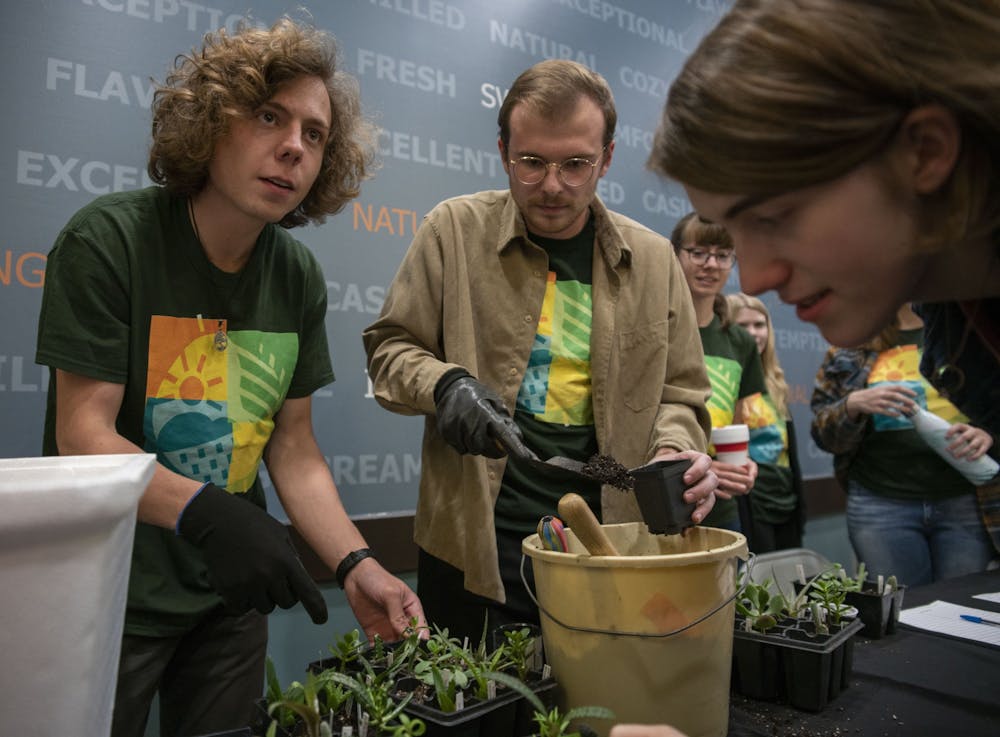Reducing, reusing and recycling aren’t the only ways to be sustainable. In fact, education and information play major roles in combating climate change.
One Ohio University group that’s working to spread climate literacy is the Climate and Sustainability Ambassadors Program through the Sustainable Administration Hub. The Climate and Sustainability Ambassador Program started last March.
As a student organization, anyone is welcome to join anytime, Ryan Fogt, assistant professor and Sustainability Administration Hub coordinator, said.
“It’s for anyone with an interest in sustainability and climate literacy,” Fogt said.
The ambassador program isn’t limited to students studying environmental sciences, Fogt added. Students of all backgrounds and majors are ambassadors.
“We take all majors,” Fogt explained. “We talk about bringing students together. We have all different ranks too — freshmen, grad students, seniors.”
In the fall, the ambassador program focuses on on-campus activities and spreading climate literacy to OU students. The ambassador program tries to reach every green, Fogt said, with events on South, East and West each semester.
Campus activities the ambassador program has hosted campus activities such as storm drainage clean-up, zero-waste football games, compost sorting, clothing swaps and planting sustainably. The ambassadors often work with other organizations, too, like Campus Recycling & Zero Waste and Rural Action.
In the spring, the ambassador program reaches out to local residents to educate non-students on climate literacy.
“We talk to local schools and work with Rural Action sometimes, [to] educate local communities on climate literacy and how we can reduce our environmental footprints,” Fogt said.
Recently, the ambassador program visited a seventh-grade classroom to engage with middle school students on the topic of climate change. It was a successful experience, Fogt said. Students are often enthusiastic about discussing environmental issues.
“Most [middle school students we talk to] are passionate and excited and concerned about their future,” Fogt said.
To Fogt, being an ambassador is a great opportunity for students to play a role in helping the environment. The program is flexible and easily pairs with students’ busy schedules.
“It doesn’t require a lot of time,” Fogt said. “A lot of stuff is done digitally. We meet less than once a month and only require three events a semester. It’s low commitment and high impact.”
There are about 80 ambassadors in the program, Fogt said in an email. Students can join at any time, but Fogt recommends students join earlier in the semester to get the most out of involvement opportunities.
Participating in events also is an opportunity to gain volunteer hours, Fogt added.
“It’s an awesome group,” Shasta Kamara, a student ambassador, said. “I’m just starting and it’s really easy to get involved.”
Kamara, a junior studying marine freshwater environmental biology, found out about the group when the ambassador program visited one of her classes that was environmentally-themed.
“I just wanted to get involved,” Kamara said. “There’s not a whole lot of groups who do a lot of environmental work.”
One of the best parts of being an ambassador is going out to local primary and secondary schools and doing climate education outreach, Kamara said.
“It’s really neat to get involved,” Kamara said. “We get to educate kids on climate change.”
For Kamara, becoming a student ambassador was a great decision.
“People should just join, even if they’re hesitant,” she added.
Alyssa Lanier, a junior studying meteorology, joined the ambassador program because she was concerned about the status of the environment.
“The environment [is] dying and I wanted to help any way I can,” Lanier said.
The ambassador program is for anyone who’s passionate about the environment, Lanier added.
“We love all help,” she said.
To keep up with upcoming events on the Office of Sustainability, visit its website or subscribe to its newsletter. To become an ambassador, fill out the online application.






